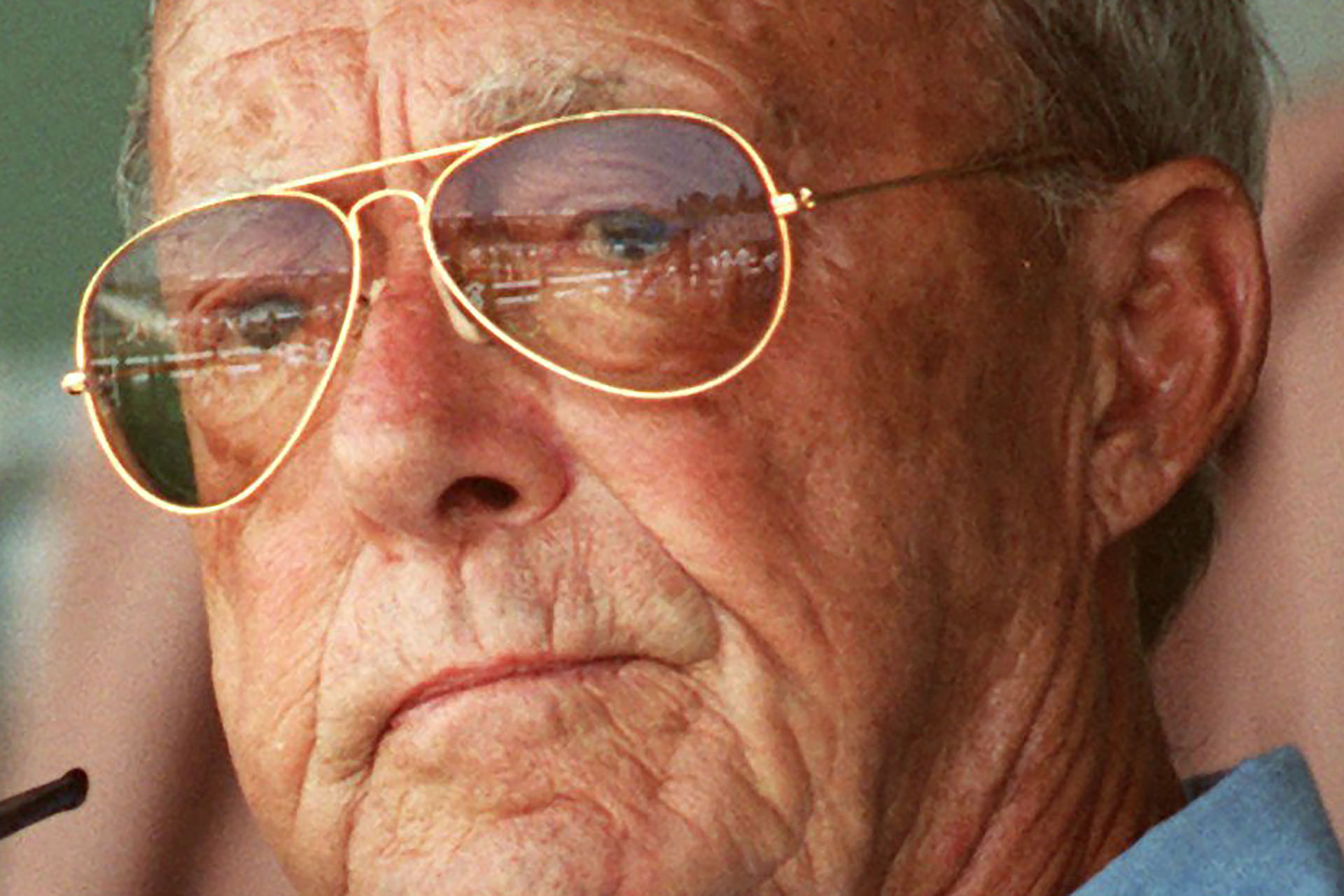Bribes, affairs, n a z i membership: the notorious Prince Bernhard of The Netherlands
According to the Dutch broadcaster VPRO, Prince Bernhard of Lippe-Biesterfeld, who died in 2004, is known by his nickname, the 'Rascal of Orange.' This title comes from a 2010 drama series that highlighted his life. When reading his life story, though, one could wonder whether the word 'Rascal' is an understatement.
As the husband of former Queen Juliana and father of former Queen Beatrix, Prince Bernhard repeatedly attracted negative media attention due to his controversial behavior. In addition, according to the Dutch publication Groene Amsterdammer, he was a member of the NSDAP around 1933.
Prince Bernhard was born in Jena in June 1911 as Bernhard Friedrich Eberhard Leopold Julius Kurt Carl Gottfried Peter Graf von Biesterfeld. He grew up in a noble, socially disadvantaged family in early 20th-century Germany. The family had a strongly anti-democratic background.
Bernhard spent his childhood on the Wojnowo estate in West Prussia where he received a private education until age twelve. He later attended the elite Arndt-Gymnasium in Berlin, where he graduated in 1929.
Prince Bernhard studied Law at the universities of Berlin and Munich before joining the chemical company IG Farben in 1935. By then, Hitler's party was already in power in Germany.
During his student years, Bernhard joined the NSDAP and was involved in the Sturmabteilung (SA) and the Schutzstaffel (SS). These involvements were the subject of discussion after the war. In 1996, historians Gerard Aalders and Coen Hilbrink produced clear evidence that Bernhard was a member of the NSDAP in 1933.
Although the prince kept denying his membership, Bernhard's NSDAP card was finally discovered in his private archives in September 2023 and released by the Royal House Archives. Historians noted that Bernhard had also stood guard during the Night of the Long Knives in 1934 when Adolf Hitler eliminated the opposition within his own party.
In 1936, Bernhard got engaged to the Dutch crown princess Juliana. They married in 1937. As historians now note, the German nobleman's political leanings were not a problem for the royal family at all. In fact, during the gala party for their wedding, the controversial Horst Wessel song - the official party anthem of the NSDAP - was performed by the orchestra, history site Historiek-net reports.
Though later presented as a figurehead of the resistance against the German occupier, Queen Wilhelmina insisted that this controversial song be played during her daughter's wedding. The House Conductor of Orange, Dr. Peter van Anrooy, refused to perform the composition and was fired.
Historian Jolande Withuis revealed in her book 'Juliana, Princess in a 'Man's World' (2016) that the marriage between Juliana and Bernhard was complicated and problematic. She described incidents such as Bernhard groping and kissing a 16-year-old girl in his residence, Soestdijk Palace, and another in which a female member of Juliana's theater club in Soestdijk Palace was assaulted.
The marriage of Juliana and Bernhard was already torn apart during the Second World War. Bernhard had several extramarital affairs during his time in London, where he was, in fact, considered a resistance hero. As historian Cees Fasseur has shown, Bernhard had at least two relationships with other women, including Lady Ann Orr-Lewis and Lady Penelope Aitken.
The image of Prince Bernhard as a 'war hero' was later nuanced by historians. The book 'Bernhard. A Hidden History' (2010) by Annejet van der Zijl states that Bernhard gave himself the image of a 'war hero' after the war.
According to historian Gerard Aalders, Bernhard was someone with a heavy feudal attitude. He believes that Bernhard enjoyed the war, contrary to his later depiction as a resistance hero.
Aalders describes Bernhard as "an unscrupulous, egocentric man." He states that Bernhard cheated on Juliana during the first year of his marriage and that this behavior was not limited to their residence at Soestdijk Palace.
After the Second World War, the couple often lived separately. Juliana twice considered divorcing Bernhard, but political pressure from the Dutch national government prevented this.
Juliana and Bernhard had four children together: Beatrix (1938), Irene (1939), Margriet (1943), and Christina (1947). Historian Gerard Aalders says that Bernhard did not see his wife as capable of raising the children and tried to remove Juliana from parental authority.
As far as historians have been able to establish, Bernhard had at least two children from his affairs: Alicia de Bielefeld (1952) and Alexia Grinda (1967).
In 1956, the German weekly Der Spiegel published a revealing article in which Queen Juliana was said to be under the influence of the 'healer' Greet Hofmans. Her close friendship with Hofmans led to a serious deterioration in the relationship between Juliana and Prince Bernhard.
In 1976, the prince was accused of corruption, particularly in the Lockheed affair. This case revolved around alleged bribes of $1.1 million that Bernhard allegedly received from the American aircraft manufacturer Lockheed. The Dutch government responded by telling Prince Bernhard to cease all his business activities.
Although no criminal investigation was initiated, Bernhard had to publicly admit that he had made mistakes and quit his business activities, including his directorships at companies such as Fokker, KLM, and Royal Smelting Works.
Prince Bernhard underwent more than fifty operations during his life. In November 2004, it became known that he was suffering from lung cancer. A malignant intestinal tumor was also diagnosed. The Prince died on December 1 of that year.
Shortly before his death, Bernhard contacted historian Gerard Aalders to tell him that everything he had written about him was untrue. Aalders responded by saying: "that is typical for Prince Bernhard."
Follow Showbizz Daily to see the best photo galleries about royalty every day

































